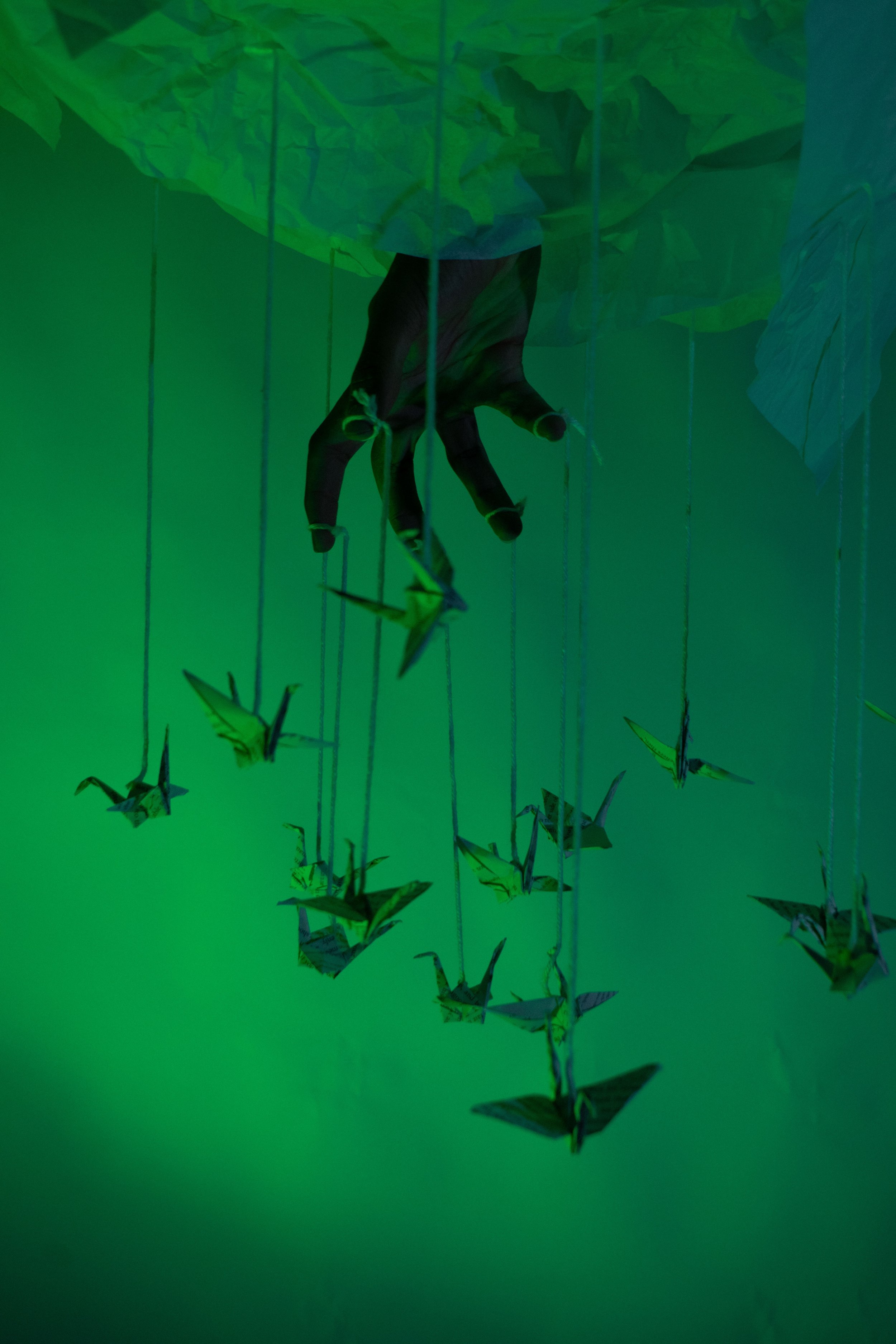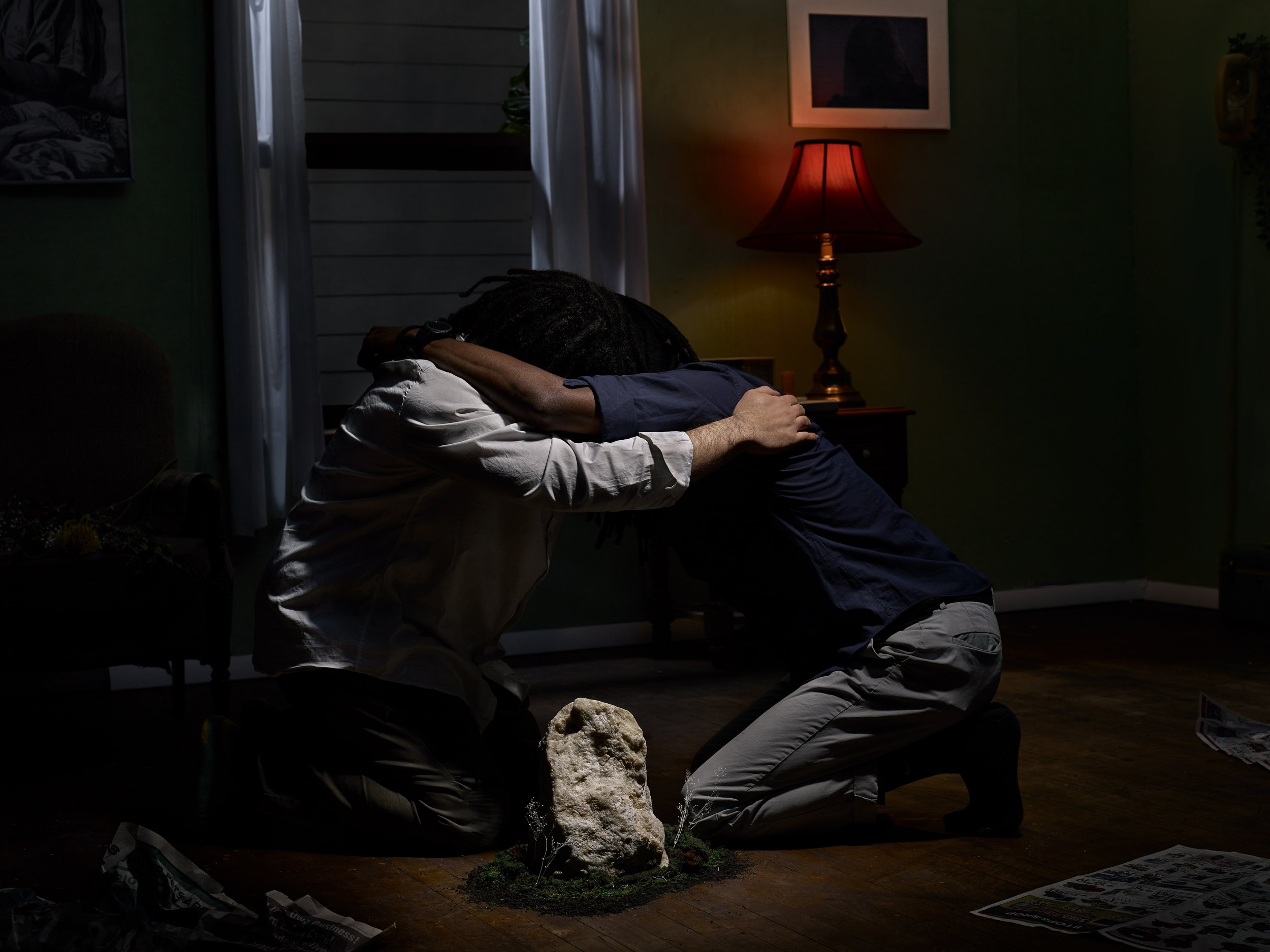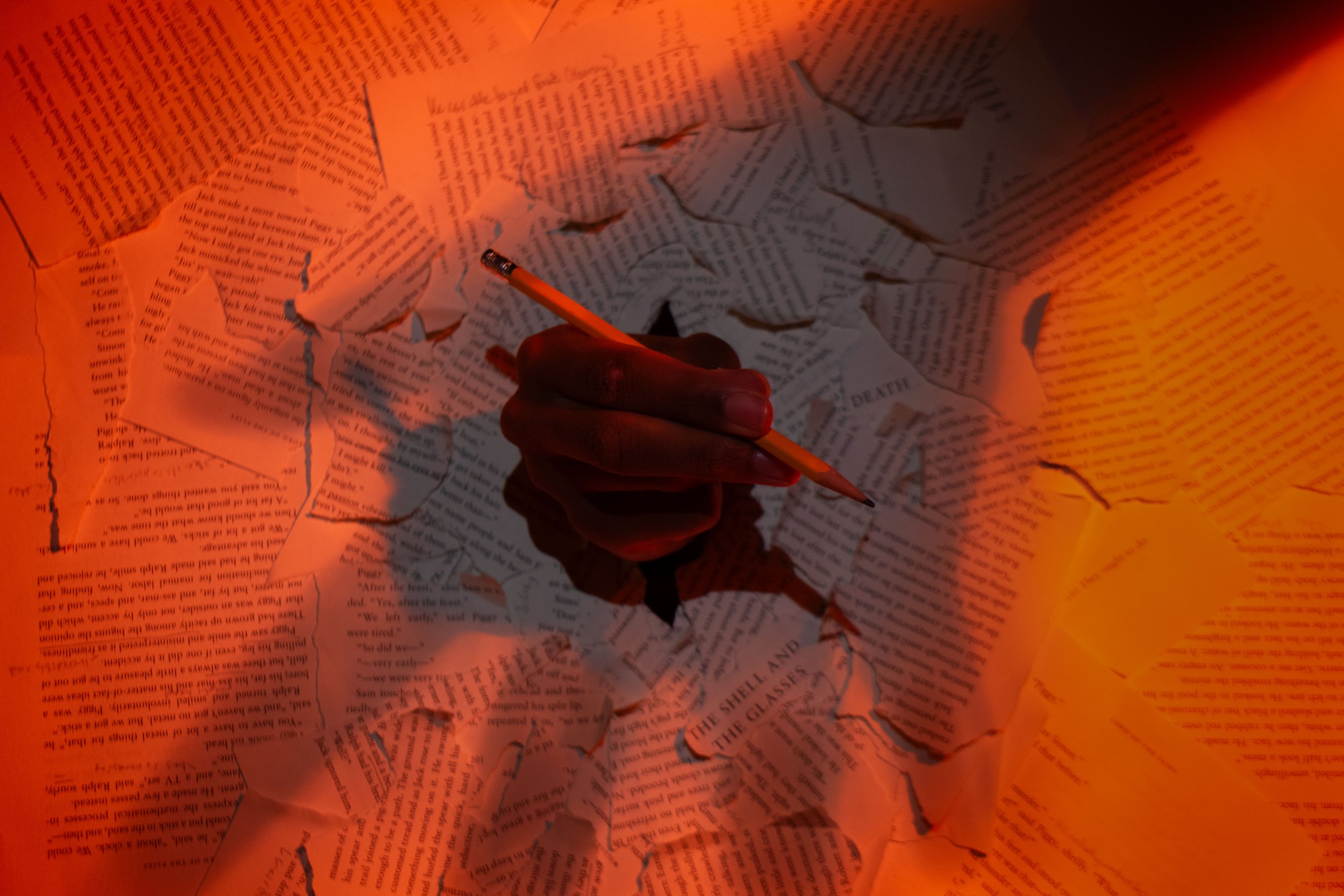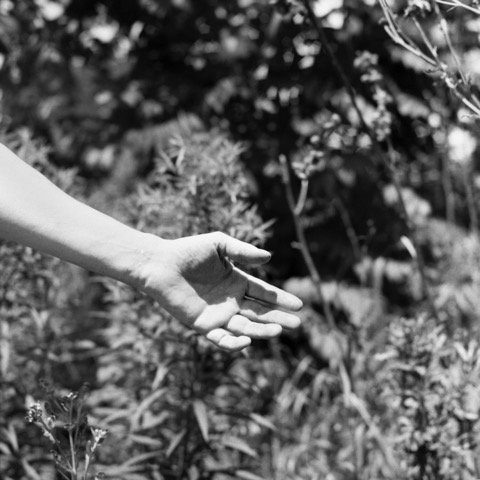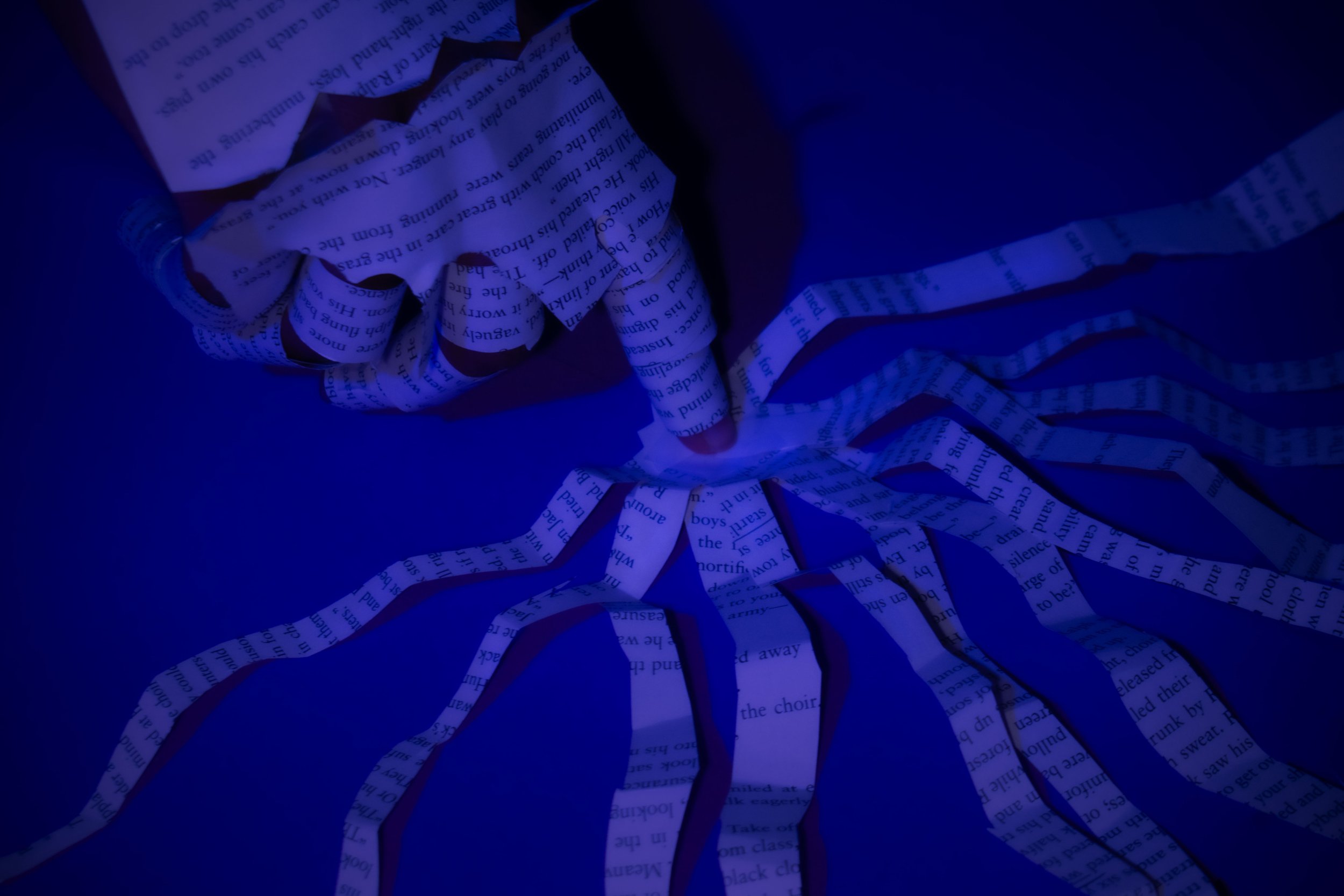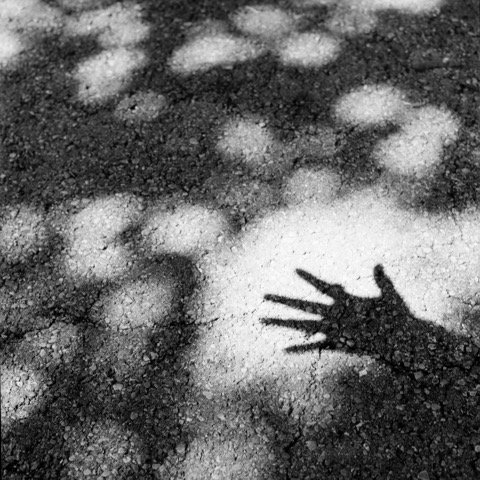On View: April 10 - July 3, 2025 | Opening Reception: Thursday, April 10, 2025 | 6pm - 9pm | RSVP HERE
In Our Hands showcases artworks that consider the role hands play in identity formation, self-expression, and worldbuilding. Within an art context, the artist’s hand boldly produces culture, often shaping intangible ideas into tangible art objects. Within a broader context, hands shape our daily lives; they construct, animate, and destroy worlds on a spectrum of scale and visibility. Alec Black, Brock Bowen, Odette Chavez-Mayo, Merik Goma, and Tazje Henry-Phillip mobilize this immense power, engaging the hand as a narrative device in visual storytelling; for them, hands are both medium and message. They reveal clues about one’s rich inner life, while also communicating a great deal about how one navigates the exterior world. If eyes are windows to the soul, then hands—with their infinite actions and gestures–are windows to human agency, where mind and body meet through the will to act.
Bowen, Chavez-Mayo, and Goma offer up their own bodies, their physical hands, as protagonists in their artworks; they too share an appreciation for the hand’s metaphorical ability to both reach back into the past for meaning and project new understandings forward into the future. Brock Bowen–the first local high school student to exhibit at Orchid Gallery–explores, “paper as a mode of self expression, illustrating how the medium can be used to morph a person's image, as a catalyst for creativity, and as a way to preserve memories and experiences.” Cast in red, blue, and green light, his A Touch of Creativity series depicts imaginative, staged scenes where paper and flesh meet, the paper carrying written messages and the hand carrying messages coded in its gestures. His expert manipulation of light and shadow produces highly-stylized visual narratives that depict his own hands with serious main character energy.
Odette Chavez-Mayo is a photographer whose nostalgic, black-and-white images explore themes of memory, identity, and longing for her Mexican homeland. She, like Bowen, offers her own body as a conduit between past and present, however, her works also carry the artist’s hand in a different way–through the laborious practice of making and manipulating images in the darkroom. She states, “central to my photographic practice is working with processes that take time. I use analog film and enjoy the physicality of making pictures come to life by laboring in the dark(room).” In Inanna, Chavez-Mayo offers a striking self portrait, where the full depths of her photographic process and explorations of self are quite literally laid bare.
Merik Goma also takes a process-based approach to constructing his highly-cinematic photographs, which explore how we, both consciously and subconsciously, project our worldviews onto others. He states, “I construct sets that the work inhabits and transform the space to create new narratives. Although the end product of my work often takes the form of a photograph, the sets I build and installations serve as a foundation for my work. The symbols and theatrical sets are intended to engage the viewer in their own personal dialogues and histories.” Yet, the photographs of these intricate sets are far more than a still life, or artist-constructed composition that brings disparate objects together to communicate allegorical meaning. By inviting viewers to see themselves as main characters in the worlds he quite literally builds with his own two hands, Goma offers sharp observations of the psychological and social issues that affect us all.
Tazje Henry-Phillip–a multimedia artist who primarily works through the medium of painting–also uses the still life as a means to bridge traditional modes of expression with contemporary ways of seeing. She states, “my work is both imaginative and abstract with classic influences. I create art that feels expressive; art that captures things that I enjoy, things that may come to mind, and the ways that I feel. My hope is to make distinctive and captivating works that evoke emotion and enhance environments.” While A Pear for Your Thoughts depicts a physical hand offering fruit in exchange for wisdom, Little Violin and Still Life #2 each ask the viewer to imagine the protagonist of the scene, whose hands would make music, sip coffee, or engage in other forms of leisure, self-care, and rest in the airy scenes she’s artfully composed.
Alec Black is a multimedia artist whose work spans drawing, painting, printmaking, and zinemaking to examine, in his own words, “the prevailing ideas of ‘Asian culture’ in America and how Orientalism and pressures towards assimilation and Americanization flatten[s]/commodifies perceptions of East Asia.” In his works on view, hands often speak to the nature of one’s work, whether it be as a massage therapist, entertainer, or sex worker, stereotypes often imposed on Asian American women. Black subverts the aesthetics and language of commercial advertising to create politically-charged artworks that, “blend the traditions of ‘American portraiture’ with symbols of Orientalism,” to question the role of art and aesthetics in constructing social, cultural, and economic value.
In Our Hands honors a generation of artists bravely reaching; whether its grasping back nostalgically into the annals of memory and history, or fumbling for meaning through the darkness of our political present, these artworks affirm the adage that the future is in our hands. Through the courage of its exhibiting artists, In Our Hands questions the limits of human memory, agency, and control, while also affirming who and what fall under our duty of collective care.
Alec Black, The Fish Market, 2023
Brock Bowen, A Touch of Creativity; Green
Merik Goma, Your Absence is My Monument Untitled 1, 2020
Odette Chavez-Mayo, Kali
Tazje Henry-Phillip, Pear for Your Thoughts, 2025
Alec Black, Backstage, 2023
Brock Bowen, A Touch of Creativity; Red
Merik Goma, As I Wait, Untitled 11
Odette Chavez-Mayo, Inanna
Tazje Henry-Phillip, Little Violin, 2017
Alec Black, Yelp Review, 2023
Brock Bowen, Preservation; Safekeeping
Merik Goma, Chasing Light
Odette Chavez-Mayo, Tu Mano
Tazje Henry-Phillip, Still Life #2
Brock Bowen, A Touch of Creativity; Blue
Odette Chavez-Mayo, Mi Mano
meet the artists
I am a recent graduate of Wesleyan University's Studio Art program. My work spans drawing, painting, printmaking, and zinemaking. My practice of drawing, zinemaking, painting, creative writing, printmaking, and poetry examines the prevailing ideas of “Asian culture” in America and how Orientalism and pressures towards assimilation and Americanization flatten[s]/commodifies perceptions of East Asia. I utilize the visual language of signage, advertisement, and commercial objects by depicting figures using oil pastels, sumi-e ink, and acrylic paint on top of “Asian inspired” tapestries. I want to blend the traditions of “American portraiture” with symbols of Orientalism to destabilize how we think of what is “fine art” versus what is viewed as cheap, disposable, and “foreign.” I think about assimilation, and what it means to make a house a home.
Brock Bowen
I am a student at Hopkins School. My works explore paper as a mode of self expression, illustrating how the medium can be used to morph a person's image, as a catalyst for creativity, and as a way to preserve memories and experiences. These photographs exhibit a sense of change and growth over time. You can see that both literally and metaphorically. I love using paper to create art whether it be two dimensional or three dimensional–to properly depict that, I offer both very intimate scenes, and very distant scenes, imagined from the eye of the viewer. Each of my pieces are photographed from different angles and perspectives to communicate how complex paper, as a mode of creativity and self expression, truly is.
As a child, I left my homeland and everyone I loved behind. Since then, my life has been marked by constant changes, challenges, and an incessant yearning for something I can’t quite name. Photography became a means of preserving fleeting moments and sustaining connections with the people and places I cherish. It’s how I navigate the intricacies of my existence, and where I explore themes of memory, identity, and belonging. I create images imbued with a tinge of nostalgia and longing, hoping to capture the beauty and complexity of everyday life. Central to my photographic practice is working with processes that take time. I use analog film and enjoy the physicality of making pictures come to life by laboring in the dark(room). Allured by the act of forgetting and remembering, I abandon my images so that they can marinate in time, waiting to be discovered with the promise of a distant perspective. This dynamic mirrors my relationship with Mexico, my homeland, a place of profound significance and continual inspiration. My photographs serve as fragments of memory, bridging past and present, life and loss. They aspire to transcend being mere images and become vessels of emotion that offer glimpses into the depths of my personal experiences and the enduring power of connection.
Through the manipulation of set design and photography, my work takes on a critical view of human conditioning. It delves deeper into self-assessment, exploring how we consciously or subconsciously project ourselves onto others. My work is often made to observe psychological and social issues. I became interested in invisibility and visibility after reading the Invisible Man by Ralph Ellison and “How It Feels to Be Colored Me,” an essay by Zora Neale Hurston. Both tend to consider outside factors that force visibility on people of color. But I wondered about the contexts in which people of color can claim visibility in situations where they are rendered invisible and how invisibility can be used as an advantage.
I construct sets that the work inhabits and transform the space to create new narratives. Although the end product of my work often takes the form of a photograph, the sets I build and installations serve as a foundation for my work. The symbols and theatrical sets are intended to engage the viewer in their own personal dialogues and histories. After completing this work, I aimed to continue using the world I had created as the framework for my series.
Tazje Henry-Phillip
I’m a multimedia artist who primarily works through the medium of painting. My work is both imaginative and abstract with classic influences. I create art that feels expressive; art that captures things that I enjoy, things that may come to mind, and the ways that I feel. My hope is to make distinctive and captivating works that evoke emotion and enhance environments.


